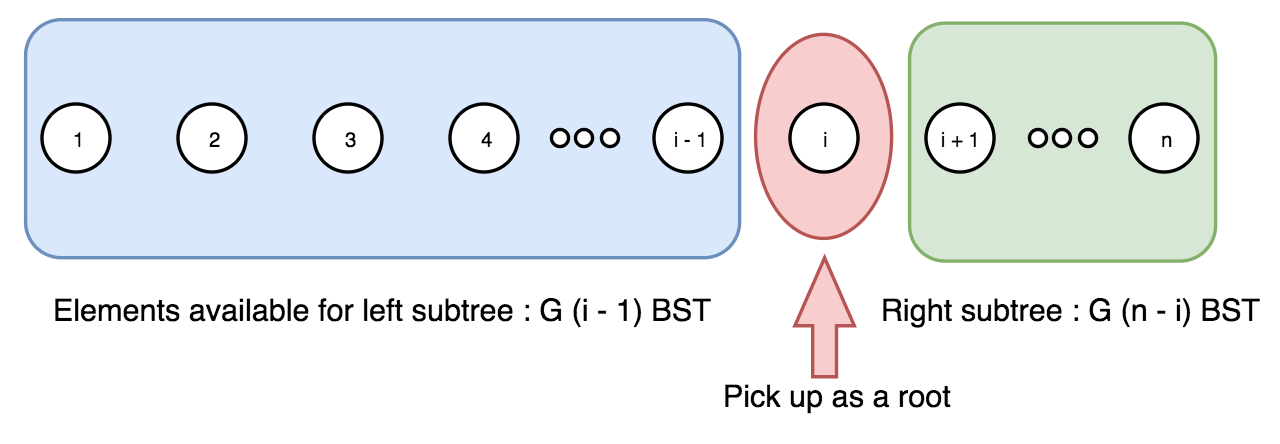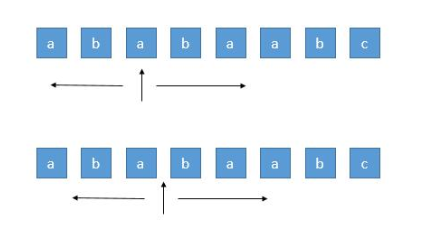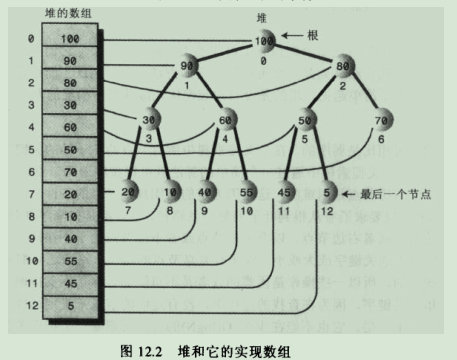算法分类:Stack
url:https://leetcode.com/problems/valid-parentheses/
题目
1 | 20. Valid Parentheses |
Java解法
1 | class Solution { |
1 | class Solution { |
Python解法
1 | class Solution(object): |
url:https://leetcode.com/problems/valid-parentheses/
1 | 20. Valid Parentheses |
1 | class Solution { |
1 | class Solution { |
1 | class Solution(object): |
url:https://leetcode-cn.com/problems/unique-binary-search-trees-ii/
1 | 给定一个整数 n,生成所有由 1 ... n 为节点所组成的二叉搜索树。 |
分析
首先来计数需要构建的二叉树数量。可能的二叉搜素数数量是一个 卡特兰数。
我们跟随上文的逻辑,只是这次是构建具体的树,而不是计数。
算法
我们从序列 1 ..n 中取出数字 i,作为当前树的树根。于是,剩余 i - 1 个元素可用于左子树,n - i 个元素用于右子树。
如 前文所述,这样会产生 G(i - 1) 种左子树 和 G(n - i) 种右子树,其中 G 是卡特兰数。

现在,我们对序列 1 … i - 1 重复上述过程,以构建所有的左子树;然后对 i + 1 … n 重复,以构建所有的右子树。
这样,我们就有了树根 i 和可能的左子树、右子树的列表。
最后一步,对两个列表循环,将左子树和右子树连接在根上。
1 | public class TreeNode { |
https://leetcode.com/problems/two-sum/submissions/
Given an array of integers, return indices of the two numbers such that they add up to a specific target.
You may assume that each input would have exactly one solution, and you may not use the same element twice.
Example:
1 | Given nums = [2, 7, 11, 15], target = 9, |
1 | class Solution { |
1 | # https://leetcode.com/problems/two-sum/submissions/ |
url:https://leetcode.com/problems/recover-binary-search-tree/
1 | 99. Recover Binary Search Tree |
分析
1 | public class TreeNode { |
1 | 这其实是一道变形的链表反转题,大致描述如下 |
解析
这道题的难点在于,是从链表的尾部开始组起的,而不是从链表的头部,如果是头部的话,那我们还是比较容易做的,因为你可以遍历链表,每遍历 k 个就拆分为一组来逆序。但是从尾部的话就不一样了,因为是单链表,不能往后遍历组起;
思路1:整体反转,然后从头开始截取 K个节点 ,被后续截图的K个节点 的尾部连接;最后长度不足K的节点再局部反转 作为 队头
思路2:整体反转,
1 | class Node { |
URL:https://leetcode-cn.com/problems/longest-palindromic-substring/
1 | 给定一个字符串 s,找到 s 中最长的回文子串。你可以假设 s 的最大长度为 1000。 |
分析
扩展中心算法

1 | import java.util.Stack; |
同样解法的代码优化
1 | class Solution { |
动态规划的解法

1 | public class App { |
url:https://leetcode.com/problems/kth-largest-element-in-an-array/
1 | 215. Kth Largest Element in an Array |
用数据结构 Head(堆)来实现
堆:完全二叉树,常常用数组表示

用数组表示一棵树时,如果数组中节点的索引位x,则
a、它的父节点的下标是:(x-1)/2;
b、它的左子节点的下标为:2x + 1;
c、它的右子节点的下标是:2x + 2;
堆的数组实现:https://www.cnblogs.com/g177w/p/8469399.html
1 | class Solution { |
1 |
url:https://leetcode.com/problems/h-index-ii/
1 | Given an array of citations sorted in ascending order (each citation is a non-negative integer) of a researcher, write a function to compute the researcher's h-index. |
[0,1,3,5,6]
数组长度 n,存在一个元素 h, 使得 n 中有 h个元素 大于等于h, 其他 (n-h)个元素 < h;
求h?
数组是有序的 递增数组
遍历 arr,存在 arr[i], 使得 n-i == arr[i]
1 | class Solution { |
1 | public int hIndex(int[] citations) { |
URL:https://leetcode.com/problems/binary-tree-right-side-view/
1 | Binary Tree Right Side View |
分析
使用层序遍历(level traversal),即广度优先搜索 —— 借助Queue
难点是 标注每一层,来标注 每层的最后一个节点
当前层节点总数:count1,当前访问到节点数 i
下一层几点总数:count2
1 | public class TreeNode { |
结果
Runtime: 1 ms, faster than 98.22% of Java online submissions for Binary Tree Right Side View.
Memory Usage: 36.3 MB, less than 100.00% of Java online submissions for Binary Tree Right Side View.
1次AC,Niubility
1 |
url:https://leetcode.com/problems/binary-tree-maximum-path-sum/
1 | 124. Binary Tree Maximum Path Sum |
分析:
不要求 最大值的路径,只要求最大值
1 | public class TreeNode { |